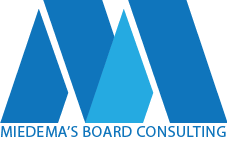The word “governance” comes from a Greek verb meaning “to steer”. This provides some interesting imagery for a board of directors when they are thinking about their role. One comparison we can make is to the captain of a ship. Since the captain is the person who steers the ship, we can compare the board to a ship’s captain. Here are some analogies:
The captain steers the ship. This might sound obvious but if the captain is not steering, then who is? In the best case, someone else takes the initiative and steps in. In the worst case, the ship is drifting aimlessly and at risk of disaster.
The captain gives clear directions. If there were seven, twelve or twenty captains giving directions the ship would dissolve into chaos. It is important that the board speak with one voice and give clear directions to staff.
The first mate manages the crew. If the board is fortunate enough to have an executive director or CEO then it has a first mate. The first mate’s job is to hire and manage the crew and focus on the running of the ship. The captain is aware of what is going on and ultimately is responsible and in control, but they trust their first mate to do their job.
There are clear lines of command. Since the first mate is responsible for the crew, the directions go through them. It is very disruptive and potentially dangerous if the captain is giving directions to crew members. It addition to being distracting for the captain, it is confusing and demoralizing for the crew if the captain’s orders contradict what they were instructed to do by the first mate.
The captain focuses on what’s ahead. The captain is the one charting the course, ensuring the ship has everything it needs for its journey, looking ahead and watching for risks. The captain learns from the past but does not focus on it. The primary focus is on what is ahead.
The captain is prepared for storms. The captain goes into the journey knowing that storms will be encountered. They are not surprised by them or caught unaware. A good captain tries to steer around and avoid as many storms as possible but on a long journey a storm will eventually be encountered and the captain is prepared. Scenarios and safety systems are tested and monitored so the ship, its crew and its assets are protected.
There is a lot of great imagery for boards when they think about their “governance” role. I invite you to suggest other analogies of how the board is like a captain!







